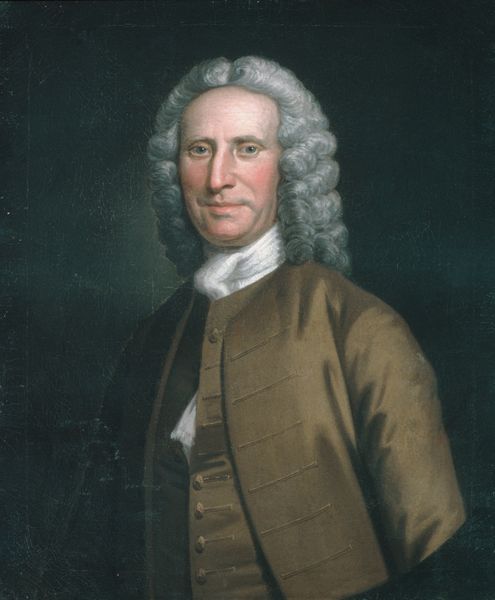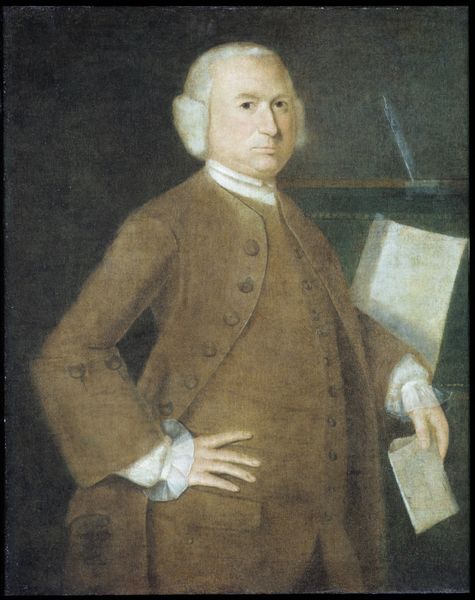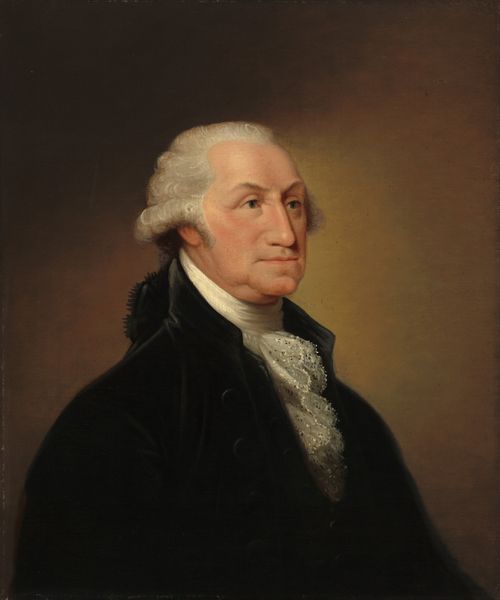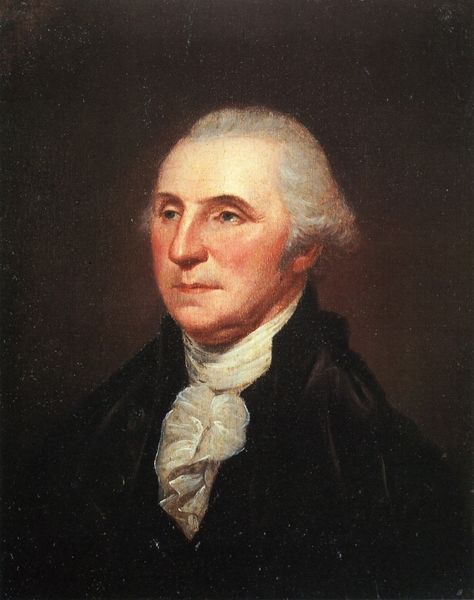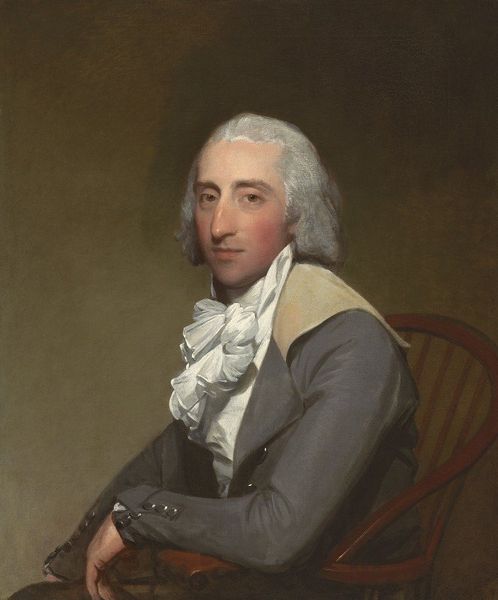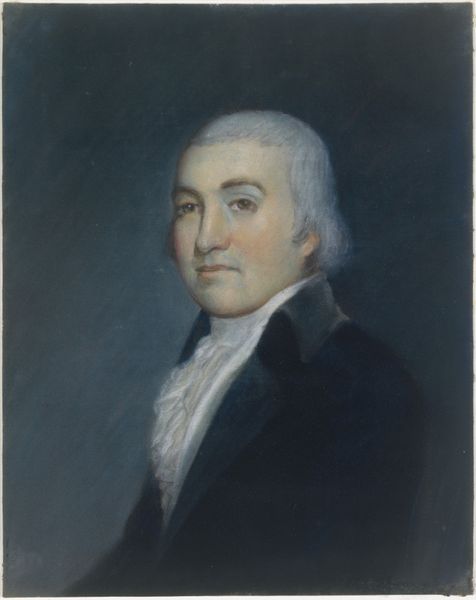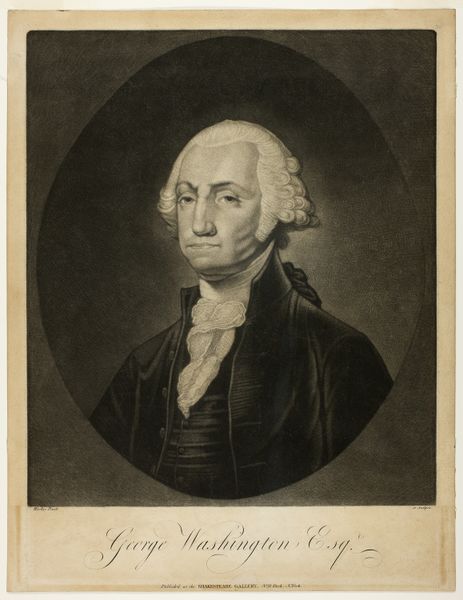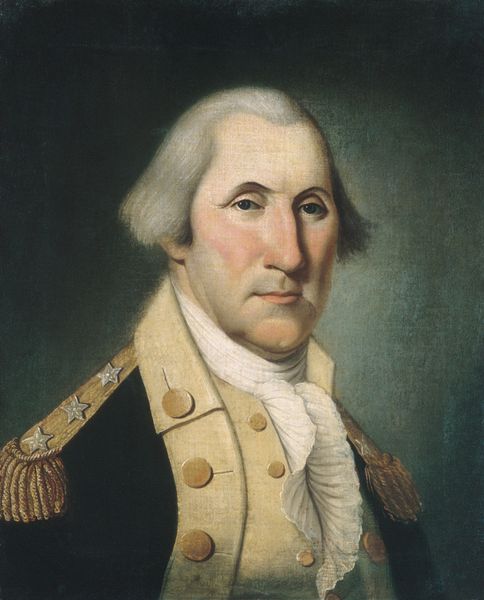
Dimensions: overall: 91.7 x 71.2 cm (36 1/8 x 28 1/16 in.) framed: 104.5 x 83.8 x 5.7 cm (41 1/8 x 33 x 2 1/4 in.)
Copyright: National Gallery of Art: CC0 1.0
Editor: This is a portrait of Captain Isaac Foster, painted by Joseph Badger in 1755. I'm struck by its formal and somewhat austere presentation. What story do you think this piece tells about the sitter and the society he inhabited? Curator: Well, consider the year, 1755. The colonies were simmering with unrest. The French and Indian War was brewing, contributing to the unease and tension with British rule. The portrait reflects this tension; the subject's posture and dress represent a certain social class seeking legitimacy through representation, while subtly asserting its own distinct, American identity. The artist's slightly unsophisticated rendering, compared to established European portraiture, even hints at a developing artistic identity independent from British standards. Editor: So, this portrait becomes almost like a quiet declaration of colonial identity, even though it looks traditional on the surface? Is the choice of dress then quite important? Curator: Absolutely. Though appearing conventional for the period, consider its purpose. Who commissioned the portrait? How was it displayed? Such works often served a public role, shaping how families wished to be seen in their community. What’s fascinating is that the lack of overt markers of wealth might also subtly communicate a sense of civic responsibility or perhaps a quiet rebuke to the extravagance associated with the British aristocracy. The choice of colors and poses are also indicative of this narrative. Editor: I never thought about portraiture that way, as a form of subtle social and political commentary. It really changes how I see paintings like this now! Curator: Precisely! Art doesn’t exist in a vacuum; it reflects and shapes the world around it. That intersection of social context and artistic expression is what makes studying art history so rewarding, isn’t it?
Comments
No comments
Be the first to comment and join the conversation on the ultimate creative platform.
